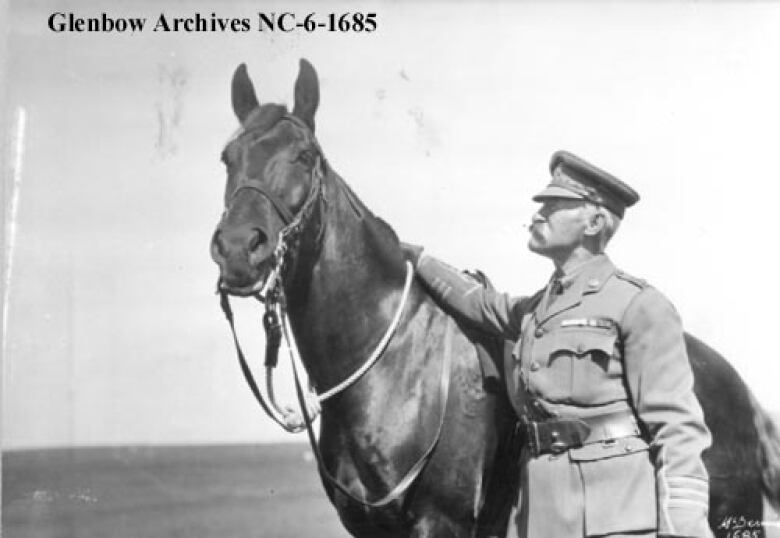Calgary's history with horses
From milk delivery to meter reading to transportation, horses helped build our modern metropolis

When we Calgarians think of horses, we're likely to think of the Stampede. But horses have a much longer history in our city. They helped build this place we call home, from the moment the N.W.M.P. rode up to the Bow back in 1875.
- Meet Calgary's hoofed crimefighters: Stryder and Ranger
- A brief history of Calgary newspapers
- Some of Calgary's oldest bars and the people who ran them
Horses trotted down our dirt streets as personal transport, fire trucks, hearses, delivery vans, meter readers, grading machines, military vehicles, and members of the family. Here are some horses from Calgary's past.
Horse drive

Horses in Calgary's early history were often brought in from British Columbia and later Montana. They were driven here in herds, sometimes as many as 500 at a time.
Early steeds

Man with his saddle horse,1890.
'Fashionable women'

The fashionable women around town also took the reins for themselves in Calgary's early days. Francis Wood was married to a N.W.M.P. officer stationed here, and she lived at the barracks. Her horse was named Punch, and she drove what she called, "the applecart."
Fire department

Calgary didn't have a motorized fire truck until 1910. Before that, horse-drawn vehicles responded to emergency calls. The ladders they drew could reach a remarkable 23 metres (75 feet) into the air.
Racing

Calgary horse race, circa 1900.
Early jumping

Calgary is now famously home to Spruce Meadows and its internationally renowned jumping competitions, but well over a hundred years ago, some Calgarians were getting into the game early.
Long commutes

Fred Jarvis, an early settler, used his horse to get from the far flung community of Forest Lawn down into the bustling town of Calgary.
First Nations

First Nations family, circa 1900.
Milk deliveries

A common sight on Calgary streets, cars eventually replaced horses for daily milk delivery until the whole thing fell out of fashion. But the Union Milk Company of Calgary still delivered by horse until the 1940s.
Side saddle

Elsie Millar is riding side saddle, with both legs on one side of her horse. It was often considered immodest for a woman to straddle a horse. Millar rode horses a good deal of her life, and even competed in equestrian events as far away as Vancouver.
Travelling

James Abel and his family used to ride into Calgary from the outlying community of Bowness.
Winter

Even in the dead of winter, early Calgarians needed to get around town. Robert C. Thomas — owner of the Wales Hotel — and his family made use of a horse-drawn sleigh. Their horse's name was Sally.
Road work

Calgary's dirt roads were as tough to keep up then, as now. Horses were used as graders to level the dirt streets. Tough work, but efficient before pavement.
Gas man

This is the very first "meter rig" in Calgary. A horse-drawn cart for the Calgary Gas Company.
Big Four

Patrick Burns was one of Calgary's earliest entrepreneurs, and one of the "Big Four" that started the Calgary Stampede. At one point he owned four separate ranches with over 1,500 horses. This was a delivery cart for Pat Burns & Company that plied the streets around 1914.
Death and horses

An early Calgary hearse. Funeral carriage for Jacques Funeral Home, circa 1916.
The military

Colonel Robert Belcher and his horse at the Sarcee military grounds (now Westhills) in 1916. Born in London, Belcher came to Calgary in 1875 as a member of the N.W.M.P. He later served in the Lord Strathcona's horse regiment in the Boer War, and later in the First World War.
Calgary at a Crossroads is CBC Calgary's special focus on life in our city during the downturn. A look at Calgary's culture, identity and what it means to be Calgarian. Read more stories from the series at Calgary at a Crossroads.
